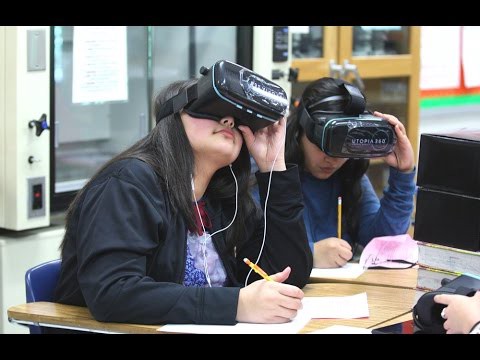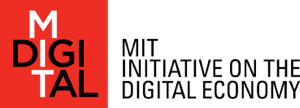
Even in an age of predictive analytics, AI, and machine learning, experts can’t fully outwit the mysteries of the future. But while we may not know exactly how much or how soon machines will displace humans, certain requirements are necessary to face tomorrow’s workforce challenges: Rapidly adopting new technology, training in meaningful ways, and reconstructing outmoded educational models.
In particular, James Tracy is immersed in determining what skills teachers and students need as the paradigm shifts. As the newly appointed President of the Woodrow Wilson Academy of Teaching and Learning, in Cambridge, MA, his role is to “to understand the implications of the technology revolution and digital society, and where they are taking us. What are we disrupting, and why, and what will replace former norms?”
If we don’t address these basic questions, he said, “educationist discourse is in a bubble” and we can’t offer a meaningful response to the shock-waves taking place.

The WW Academy wants to put new educational theories into practice. The not-for-profit Academy offers a competency-based master’s degree (M.Ed.) program — recognized by the Massachusetts Board of Higher Education — focused on science, technology, engineering, and math (STEM) for the middle and secondary grades. Its initial concentration is on math, biology, and chemistry, but the program is “omni-disciplinary,” Tracy said, recognizing the need for “empathetic” learning methods and life-long learning, as well.
The idea is that if teachers learn differently, they will teach differently.
Teacher-candidates progress at their own rate as they demonstrate the knowledge and skills that novice teachers need in the classroom. Their “challenges” are based on situations similar to the ones they will encounter as professionals now and in the future. “A key lever for making the transformation to a digital society is how we prepare the next generation of teachers,” Tracy said.
Incubator and Catalyst
In collaboration with five Boston-areas school districts, the program serves as both an incubator and a catalyst for educational change encompassing a teacher preparation program and a research and development laboratory. The WW Academy will continually test and refine the effectiveness of different approaches and share its findings on an open-source basis with providers nationwide, according to its charter.
Tracy shared his views in advance of the November 8 MIT AI and the Future of Work Congress. On a panel provocatively titled, Humans Disrupted: Skills, Training, and Leadership in the Future Workplace, Tracy and his fellow panelists will discuss the impact of AI on the future of work and what educators and business leaders need to do to retrain the existing workforce.
At the WW Academy, departure from education-curriculum-as-usual is encouraged.
For example, a cohort of ten Design Fellows last year co-developed and refined the curriculum with faculty that’s now under way. The inaugural class of 20 teacher-candidates began in September and includes many nontraditional teacher-candidates — and that’s part of its strength, Tracy said. Several are Ivy League STEM majors themselves — including two MIT graduates — who typically wouldn’t consider teaching careers but are intrigued by the latitude the Academy gives them to co-create programs and see their ideas come to life.
There are no formal classes and the program is self-paced. Twenty competency requirements have to be fulfilled via a combination of testing and clinical work. The goal is for the program to be “fully immersive, experiential and problem-oriented,” Tracy said. Using the resources of MIT’s Media Lab, for instance, students may role-play with avatars or interactive virtual reality systems, to solve real-world problems. In turn, Academy teacher-candidates will serve as technology ambassadors and change-makers, sharing their tech tools and innovations with their local school partners. One candidate already has set his sights on working outside of the public school system when he graduates, to teach children in after-school programs.
Models for Digital-era Education
While educational theories abound, there is universal agreement among educators that today’s methods won’t carry us forward, Tracy said. Moreover, he believes that change has to be tech-driven and faculty-sanctioned. During the industrialization of the early 20th-century John Dewey recognized the need for new education models for the new workforce. Similarly, “we have to reconstitute American education for a digital economy,” according to Tracy. “We don’t have all of the answers, but I want to put our ideas into the mix.
We can’t predicate tomorrow’s education on yesterday’s thinking.”
Continue reading the full article on our Medium publication here.
